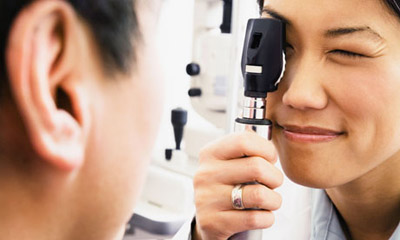General Eye Exam
Services > General Eye Exam
A complete eye exam involves a series of tests designed to evaluate your vision and check for eye diseases. Optometrists use a wide variety of tests and procedures to examine your eyes. These tests range from simple ones, like having you read an eye chart, to complex tests, such as using a high-powered lens to visualize the tiny structures inside of your eyes.
A comprehensive eye exam can take an hour or more, depending on the optometrist and the number and complexity of tests required to fully evaluate your vision and the health of your eyes. The optometrist will usually do the following:
- Eye tests to determine your refractive error and prescription. Instruments such as an autorefractor or retinoscope may also be used.
- Cover tests that check how well your eyes work together.
- Eye movements testing (Ocular motility), to test how well your eyes follow a moving object.
- Slit-lamp exams that give your optometrist a magnified view of the structures in your eyes in order to determine their health.
- Ophthalmoscopy which allows the optometrist to evaluate the back of the eye and detect ocular disease. Early signs of certain systemic diseases (eg diabetes and high blood pressure) may be seen on the retina before they are diagnosed medically.
- Sometimes your optometrist may decide to take a ‘base line’ photograph of the back of your eye, using a fundus camera.
- Eye pressure or “air puff” tests that check for glaucoma.

In some cases, besides these common tests performed during a standard comprehensive eye exam, your optometrist may recommend other, more specialised eye tests.
